How much weight can a Rottweiler pull? That question has crossed every Rottweiler owner’s mind as we watch these burly pups haul their hefty bodies around.
Rottweilers are naturally brawny dogs originally bred for droving cattle and pulling carts to market.
But just how much can these canine beasts of burden actually tow or carry in modern times?
In this in-depth article, we’ll explore the upper limits of Rottweiler strength capacity, from carting feats to mobility assistance.
You’ll also discover the multitude of factors impacting how much weight an individual Rottweiler can pull safely.
And of course, we’ll cover fun ways to engage your Rottie’s talents, from cart training to counterweight exercises.
Grab some treats and let’s appreciate the incredible towing abilities of this classic working breed!
Built for Brute Strength: The Rottweiler Physique
One glance at a Rottweiler makes their strength heritage obvious. These dogs have brawny bodies designed for formidable feats of power.
Rottweilers boast thick bones, bulging muscles, broad chests, and an overall substantial frame. Let’s appreciate the physical features that make them such adept pullers:
Size Matters
Rottweilers are medium-large dogs, averaging 22-27 inches tall at the shoulder and 85-135 pounds. Males tend to reach the higher ends of this spectrum. All that body mass generates some serious pulling power!
Brawny Chest
A Rottweiler’s broad, barrel-shaped chest provides increased attachment area for the strong muscles involved in pulling and weight bearing. Their hearty chest is the engine driving their strength.
Mighty Shoulders
Rottweilers have muscular shoulders and forelimbs built for pulling, weight bearing, and forward momentum. Thick bones, ligaments and muscles give them incredible leverage.
Robust Rear
Their hindquarters do the brunt of the work, with sturdy hind legs and bulky thighs that provide driving force when towing heavy loads. A Rottweiler’s rear tackle is remarkably robust.
Blocky Head
Proportionate to their thick necks, Rottweilers have giant blocky heads and jaws, allowing them to lean their weight into the collar or harness when pulling. Their powerful core and neck muscles assist towing.
Compact Paws
Rottweilers have rounded, compact feet with thick digital pads and arched toes. This paw construction provides sturdy traction and stability when hauling or carrying weight.
Clearly, the Rottweiler’s physique is specially engineered for impressive feats of strength, from their muscular engine to their traction-friendly paws.
This natural brawny build is the result of generations of selective breeding by Rottweiler breeders who chose only the strongest dogs to reproduce.
Over many years, this intensive selective breeding program produced a canine specimen particularly suited for brute, formidable power – the ideal physique for pulling carts, driving cattle, and hauling heavy loads.
Unleashing Their Power: How Much Weight Can a Rottweiler Actually Pull?
Alright, we’ve ogled their outstanding muscular build. Now for the big question: What are the upper limits of a Rottweiler’s mighty strength?
Let’s dig into the nitty gritty details on how much weight a well-bred, healthy adult Rottweiler can actually pull and carry:
Carting and Sled Weight
In carting trials and sled pulls, trained Rottweilers can pull over 2,000 pounds of weight! Their immense towing power is truly incredible.
Top competitors in Rottweiler carting and sledding events can pull up to 3,000 pounds for short distances.
Jamie Bullock’s Rottweiler Bomber reportedly pulled an astounding 4,000+ pounds on a sled!
Carrying Capacity
The average adult Rottweiler can easily carry 30% of their body weight on their back or in a backpack. So a 100 pound Rottweiler could securely carry and haul a 30 pound pack or load without strain.
Some working line Rottweiler packs can comfortably carry loads upwards of 50 pounds! But for the typical household pet, 30% of body weight is a reasonable load limit.
Ideal Backpacking Weight
For long backpacking excursions, backpacks and saddle bags holding around 10-15 pounds are sufficient for most adult Rottweilers.
Start with lower weight and monitor closely for any signs of joint strain, breathing issues, or fatigue. Adjust pack weight accordingly to keep your hiking buddy happy on the trail.
Appropriate Workout Weight
When strength training a Rottweiler for fitness goals like preparation for carting work, gradual weight between 10-40 pounds is appropriate.
Always start on the low end and slowly build up conditioning over many sessions to avoid overstressing muscles, joints, or ligaments. Too much weight too soon risks serious injury!
Allow proper rest days between strength sessions. And monitor for any hesitation or trembling, which signals overexertion.
Your training focus should be on core strength development through weight bearing exercises.
As you can see, Rottweilers are remarkably capable when it comes to pulling and carrying weight, owing to their history as formidable working dogs. With proper conditioning, these dogs can truly tow and haul some heavyweight with their brawny bodies!
Factors That Impact How Much Weight a Rottweiler Can Pull
While Rottweilers are clearly capable of impressive feats of strength, there are many factors that impact how much weight any individual Rottweiler can safely pull or carry. Let’s look at some key limitations:
Age and Maturation
Like humans, Rottweilers reach peak muscle mass and strength capacity between 2-3 years old once fully physically mature.
As Rottweilers enter their senior years over age 7, their overall strength and endurance gradually declines due to normal muscle loss and joint degeneration from aging.
Know your Rottweiler’s age and adjust any pulling or strength training accordingly. Do not overwork aging dogs past their capabilities.
Fitness Level
A Rottweiler who is physically fit and well-conditioned with good muscle tone can pull more weight than an inactive, obese or unfit dog. Proper exercise and training is key for maximizing pulling strength.
Rottweilers who swim to build muscle mass without taxing joints excel at weight pulling competitions and carting work. Their fitness directly impacts performance.
Nutrition
Providing proper nutrition through all life stages supports optimal muscle development and strength in Rottweilers.
Make sure growing Rottweiler puppies get high-quality food with adequate protein to fuel their muscle growth. The same goes for adults – diet fuels fitness!
Joint Health
Rottweilers prone to elbow, hip and knee issues should not carry excess weight to avoid taxing those sensitive joints. Protect joints by keeping your Rottweiler slim and conditioned.
Look for early signs of lameness, difficulty standing up, or hesitation to exercise. Address any emerging joint issues promptly. Osteoarthritis can diminish a Rottweiler’s pulling power.
Breathing Capabilities
Rottweilers are an at-risk breed for heat stroke due to their short muzzles, thick necks and chest conformation. They also tend towards exertional breathing issues.
During pulling or packing, monitor your Rottweiler closely for excessive panting, wheezing, coughing or respiratory distress.
Immediately stop the activity and allow your dog to rest and cool down. Do not overwork dogs prone to breathing issues.
Past Injuries
Past injuries like strained muscles, torn ligaments, slipped discs or botched ACL surgeries can severely reduce a Rottweiler’s weight bearing capabilities.
Rottweilers who injured their joints or ligaments early in life often develop related osteoarthritis. Chronic pain inhibits their ability to pull weight safely.
Always get veterinary guidance on rehab and exercise limitations for previously injured Rottweilers. Never push a dog with chronic health conditions beyond their comfort zone.
Overwork Risk
Doing too much too soon – both in pulling weight and conditioning – can overstress muscles and joints and lead to serious injury in Rottweilers.
Building up endurance and strength capacity GRADUALLY over many sessions reduces risk of muscle tears, ligament ruptures, disc herniation and other injuries.
Plenty of rest between sessions gives the body time to recover and adapt appropriately to avoid overworking tissues. Strength training must be approached carefully and incrementally.
As you can see, there are many variables that influence how much weight an individual Rottweiler can safely pull or carry during strength exercises, carting work, or packing. Always cater activities to your dog’s needs and abilities.
Pulling Precautions to Keep Rottweilers Safe
When asking “how much weight can a Rottweiler pull?” we also have to consider their welfare. Here are some key pulling safety precautions:
- Start with very low weight loads and short pulling distances, building up slowly over multiple sessions. Avoid heavy loads early on.
- Use a properly fitted harness made for pulling or carting that doesn’t restrict shoulder movement or breathing. Well-designed rope or leather weight pulling harnesses are ideal. Never attach carts or weight to a collar only.
- Put dog booties or paw wax on your Rottweiler during pulling exercises to protect their paws and dewclaws from abrasions and cuts on rough terrain. Torn dewclaws are common carting injuries.
- Frequently monitor your Rottweiler for any signs of fatigue like limping, excessive panting, coughing, wheezing or slowing down. Stop immediately and allow your dog ample time to rest.
- Always avoid strenuous pulling activities in temperature extremes to prevent heat stroke or hypothermia. Carting and packing are safest in cool, dry weather.
- Make sure your Rottweiler is eager and excited to pull – never nervous or fearful about weight behind them. Use rewards and praise to make it a fun, engaging activity rather than grueling “work” for your pet. Proper motivation is key!
Follow these common sense pulling guidelines, and you can strengthen your Rottweiler’s working abilities safely without jeopardizing their health or happiness. Listen to your dog and they’ll let you know their limits.
Fun Ways to Engage Your Rottweiler’s Strength
While Rottweilers were originally bred as mighty cattle dogs, modern pups certainly don’t нуж to work nine-to-five pulling jobs!
However, it’s still beneficial to provide appropriate outlets for a Rottweiler to exercise their natural talents. Structured strength activities can be both physically and mentally enriching if done safely.
Plus, it’s ridiculously fun to watch these powerful pups get to flex their muscles! Here are some ways to engage your Rottweiler’s strength at home:
Carting or Wagon Training
Carting builds on a Rottweiler’s inherent talent for hauling heavy loads. Start by having them pull lightly weighted small carts or wagons around the backyard. Gradually build up added weight over time as conditioning improves. Proper harness fit is critical.
Sledding for Sport
Once the snow starts falling, get your Rottie their own dog sled or rig to pull the kids or other pets. Start with light plastic toboggans before attaching an actual sled. Supervise closely and limit distance.
Treasure Hunt Tows
Hide treats in the yard or home, then have your Rottie gently tow you by the leash to locate the treasures! This makes great mental and physical exercise. You can increase “resistance” by walking slower.
Tug-of-War Games
Tug toys are the perfect way to engage your Rottweiler’s neck, shoulder and grip strength from the comfort of home. Always supervised tug play for safety and use thick tug ropes designed specifically for power chewers.
Backpacking with Weighted Vests
Use lightweight doggy backpacks on walks, then gradually add gentle weight by inserting water bottles or specially designed dog vest weights. This adds extra resistance for fitness. Monitor for any chafing.
“Hold” Obedience with Hand Weights
Practice the “hold” command using a dumbbell or ball, then slowly add light hand weights in a backpack for them to carry around and hold steadily in their mouth to build jaw strength and coordination.
Climbs, Crawls and Balance Games
Rottweilers can put their core muscles to work on agility equipment like ramps, balance beams, fitness hurdles and obstacle tunnels. Always monitor jumping to avoid excess joint impact.
Options for actively engaging your Rottweiler’s natural muscle power are endless if you get creative! Just focus on keeping activities rewarding versus repetitive work. And never overdo duration or resistance.
How Much Weight Can a Rottweiler Pull? Key Takeaways
After this deep dive into Rottweiler strength capabilities, what are the key takeaways?
Rottweilers are naturally gifted with tremendous power for pulling, hauling and carrying heavyweight.
Their muscular build was specially engineered through generations of selective breeding to excel at these working tasks.
However, with great power comes great responsibility on the owner’s part. While Rottweilers CAN pull upwards of several thousand pounds, each individual has their limits based on health, conditioning and age.
Rottweiler owners must exercise extreme caution to keep their companions safe during all strength training, weight pulling, packing and carting activities.
Avoid overexertion, always start gradually, and monitor for any signs of struggle or fatigue.
Structured strength outlets are wonderful for both physical and mental enrichment – IF done carefully with adequate warm up, conditioning, rest breaks, proper equipment, and attentive monitoring. Always put welfare over winning competitions or impressing onlookers.
At the end of the day, the loyal heart of a Rottweiler far outweighs their brawn. But understanding your dog’s strength capacity can help you better care for your powerful pup.
Keep an open dialogue with your veterinarian, trainer and most importantly, your beloved Rottweiler.
Thanks for joining me on this epic quest to reveal the true capabilities of the incredible Rottweiler breed. I hope this info helps you appreciate their strengths while protecting their wellbeing. Please feel free to reach out with any Rottweiler questions or training tips!
FAQs
What is the maximum weight a Rottweiler can pull?
- The maximum weight a well-trained Rottweiler can pull is over 2,000 pounds. There are examples of Rottweilers pulling over 4,000 pounds in carting competitions! But for the average pet Rottweiler, it’s best to stay under 500 pounds for pulling activities.
At what age can I start training my Rottweiler to pull weight?
- You should wait until your Rottweiler is at least 18-24 months old before introducing any substantial weight pulling. This allows their growth plates to fully close and muscles to mature, preventing injury. Start with basic obedience and leash training as a puppy first.
What’s the best way to condition a Rottweiler for safe weight pulling?
- Gradually build up your Rottweiler’s strength and endurance over many months using activities like swimming, agility, and short sledding sessions. Monitor for any signs of fatigue or reluctance. Always start with light weight loads before progressing to heavier weights very slowly.
How do I know if a weight is too much for my Rottweiler to pull safely?
- Signs like labored breathing, limping, trembling, slowing down, whining, or stopping indicate a weight is too heavy. Never force or punish your Rottweiler to keep pulling past their comfort zone. Reduce the weight and focus on positive conditioning.
Should I buy a special harness for my Rottweiler to pull weight?
- Yes, use a high-quality weight pulling or carting harness custom fitted for your Rottweiler’s chest and shoulder measurements. Ensure it does not restrict shoulder movement or breathing. The harness should evenly distribute weight and pulling force across their body. Never attach carts or weights to a collar.
Let me know if you need any other Rottweiler pulling questions answered! Proper training and equipment is key to keeping this breed safe while allowing them to showcase their natural talents.

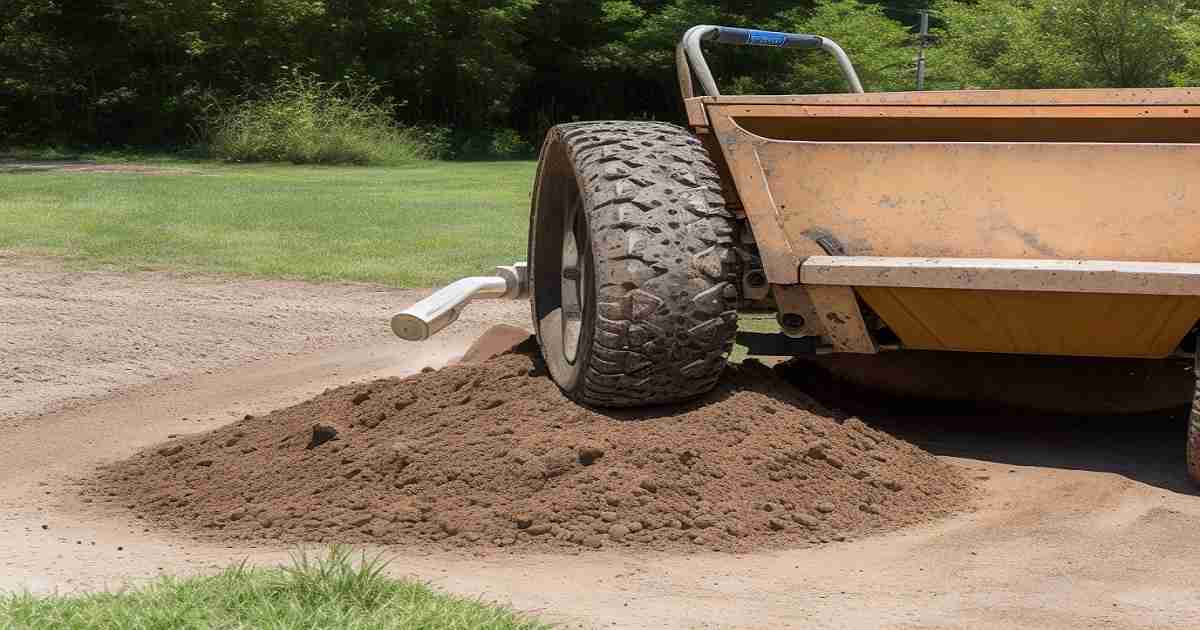
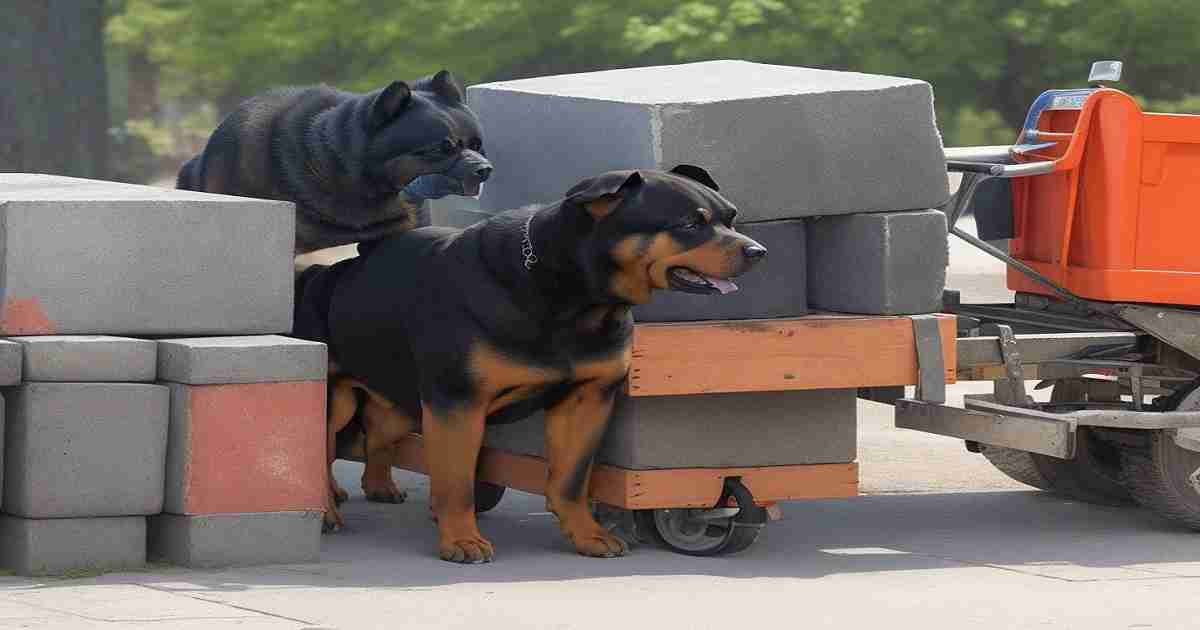
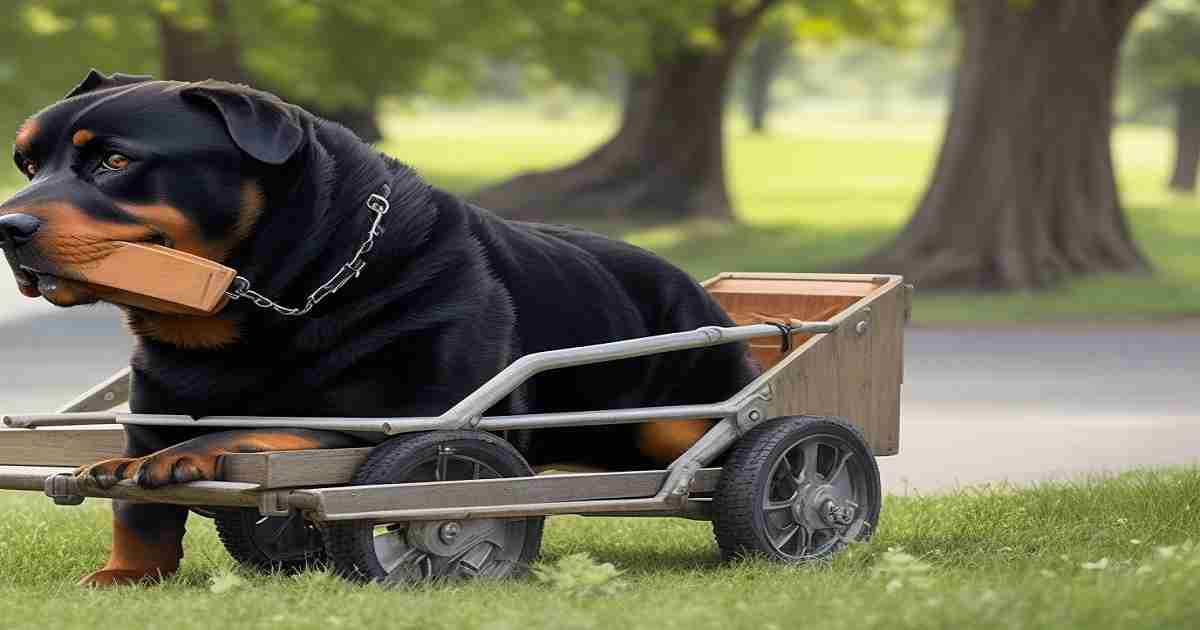
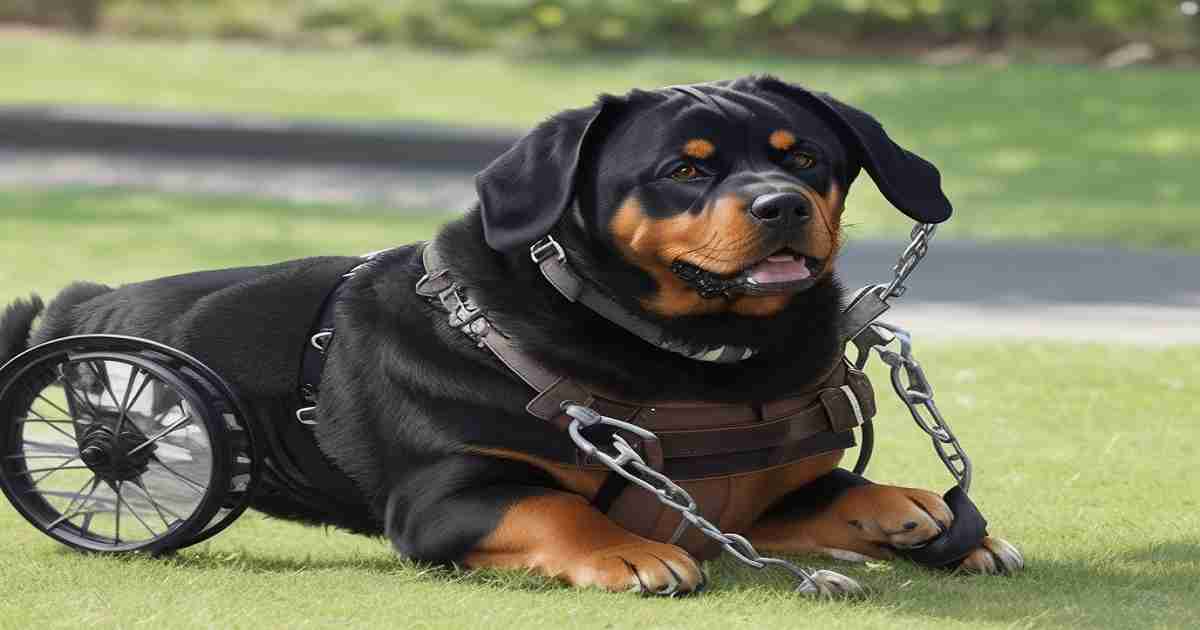
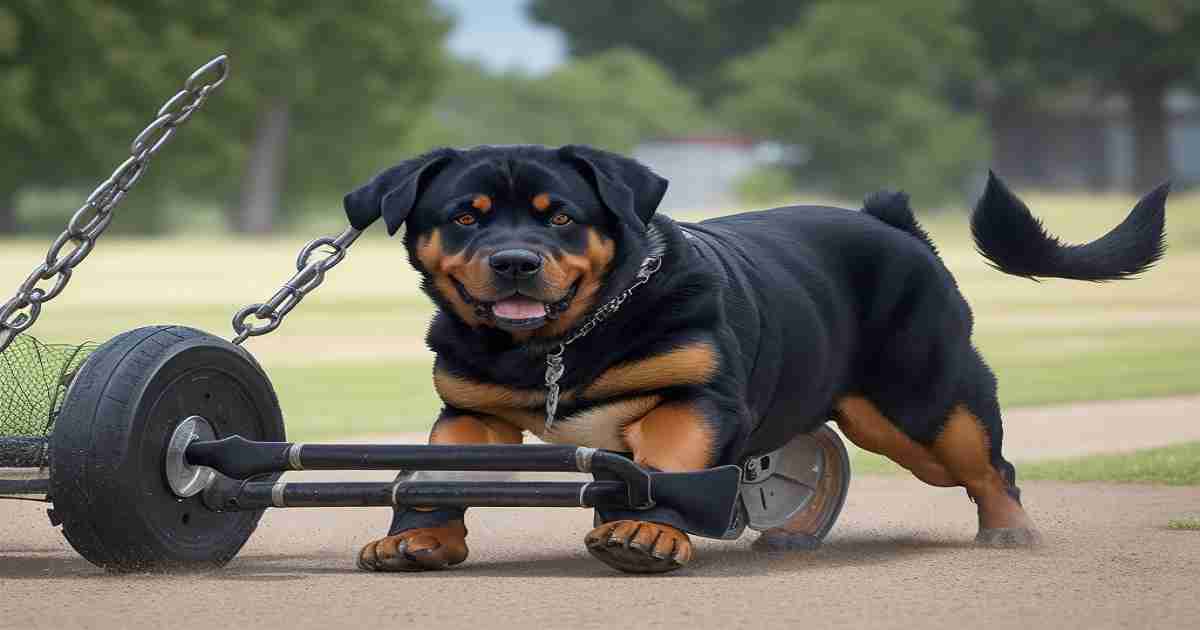
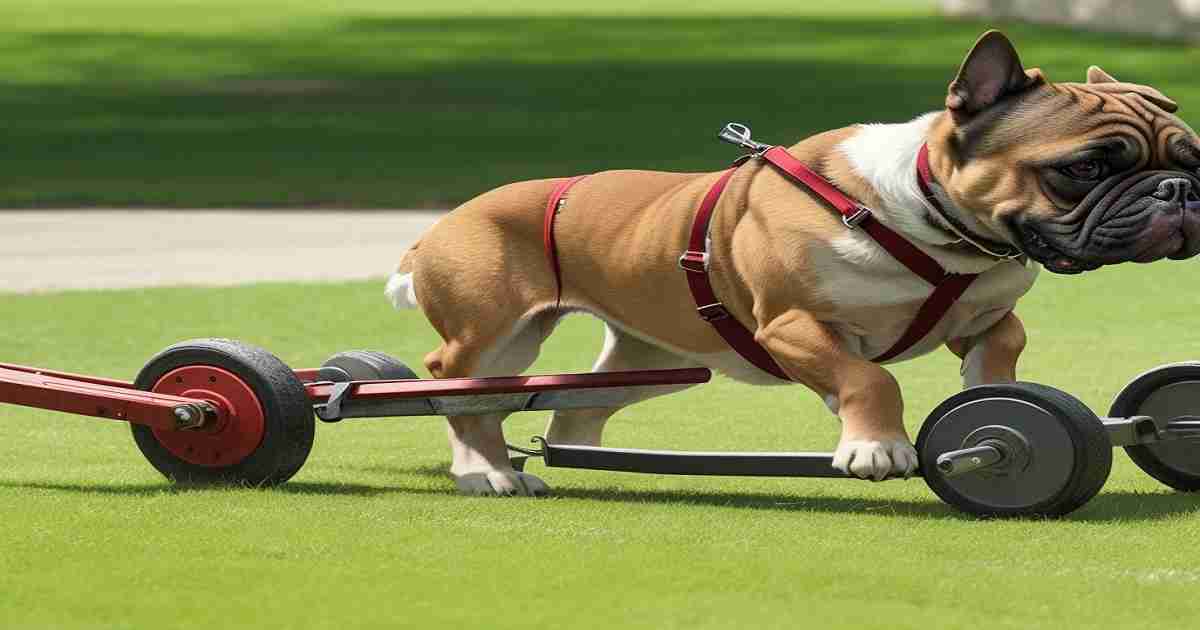



5 thoughts on “How Much Weight Can a Rottweiler Pull? Unlocking the Strength of This Powerful Breed”